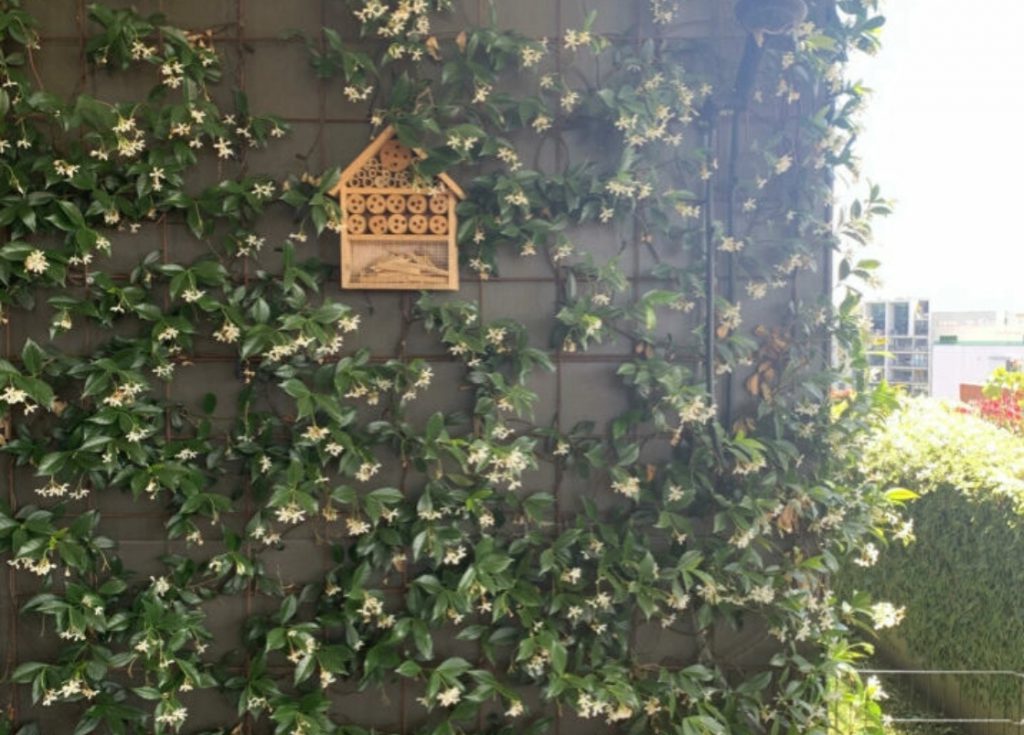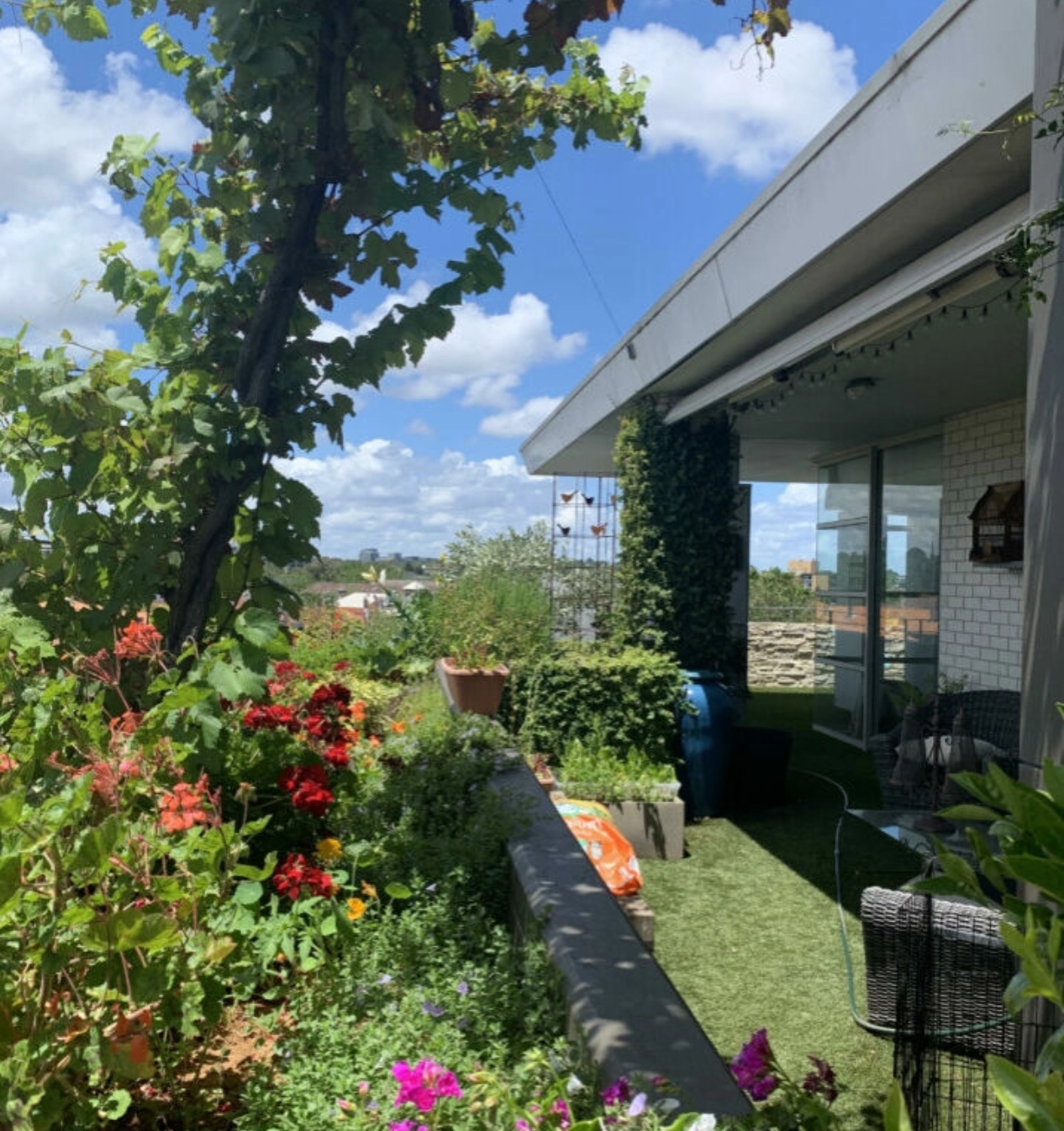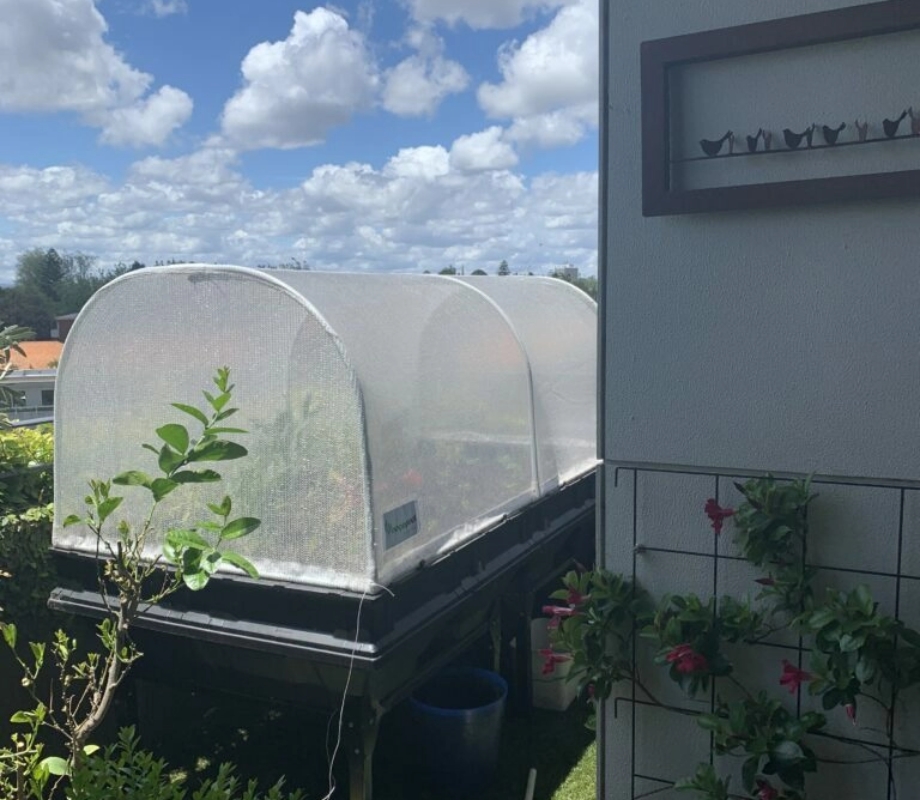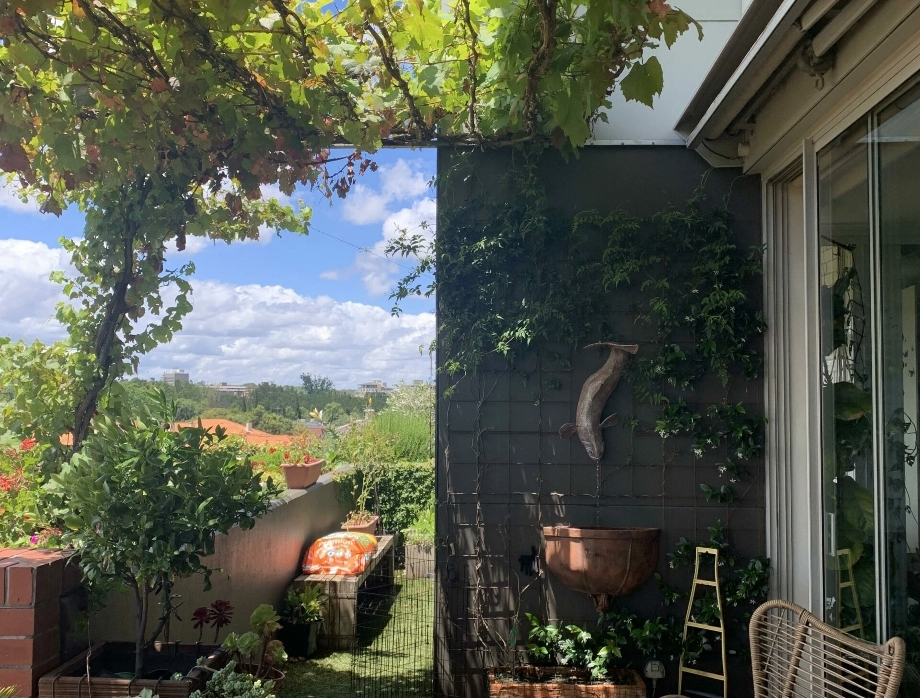Kate’s apartment in South Yarra


Gardening high up in the sky, Kate channels her inner bird persona taking in majestic soaring city views and creating a bit of a country oasis on the ninth floor of her South Yarra apartment building with a whopping 17sqm2 of balcony space full of edibles, herbs, potted citrus and olives and nectar-rich flowers. Kate says there is a limit to what she and her partner Steve can grow on a balcony but considering the summer months produce over fifty per cent of their plant-based diet her relaxed green thumbed approach certainly pays off. Having grown up on a rural property with a productive orchard she is keenly aware of eating and growing what’s in season but is also attuned to what our bodies need such as winter carbohydrate crops and in summer, leafy greens and easy-to-grow tomatoes varieties such as sweet cherry ones that she harvests daily although Kate’s go-to tomato heirloom variety is the late fruiting Black Russian which in her opinion is the most divine tomatoes you’ll ever eat your life.

“I can’t imagine not loving gardening! It’s a wonderful therapeutic thing to do and with garden beds wrapped around the balcony on the northerly and easterly aspects and composting and garden tools hidden from view on the southerly side, everything is within a hand’s reach. In just a couple of hours and I’ve pruned, mulched, and harvested,”
Kate
However, this balcony garden isn’t just an oasis for food production, but also for artistic expression as Kate finds it is a wonderful place to sketch. Kate is inspired by the sensory nature of her culinary plants such as oregano, bay, thyme and lavender, which evoke memories of European travels. Kate loves the joy of going onto the balcony and seeing lots of beautiful lorikeets and kookaburras: “It’s like being on a mini farm and I appreciate the fecundity of everything coming to life in the warmer months”.
Through Council’s My Smart Garden program, Kate has learned which vegetables are most resilient and how to carefully manage pests. With all that abundant growth also comes pests, so without fail, Kate sets her alarm for 7.30 in the evening when it’s raining and does a manual snail hunt. “I got 78 one day”, she says, “but it’s been the most effective way to keep snail damage down. Pests are the biggest challenge when you grow organic vegetables, but I just don’t want to use sprays.” She also uses netting to keep pests such as the Cabbage White Butterfly out but allow beneficial insects like ladybirds in. By sharing knowledge and experiences with other gardeners, Kate has managed to grow a productive and beautiful garden that her friends admire. But really, she says that she “just pops things in and nature’s done the rest”.
Kate has intermixed her thriving food garden in beds with hardy pelargoniums at the back to create height and cascading convolvulus in the foreground. The middle area is dedicated to lots of edibles such as broccoli, silverbeet, rhubarb, kale and herbs. Keeping food plants alive in pots over summer can be hard work, especially when positioned in a sunny concrete courtyard. Water evaporates quickly and plants in regular pots may need to be watered more than once a day. She has found that the best harvests are grown in the commercial wicking bed system and her own DIY version. At a My Smart Garden workshop she learned to make a wicking bed using salvaged materials including a repurposed plastic tub and piece of downpipe. Kate has embraced these wicking pots and beds because they use water very efficiently and prevent evaporative losses. She says it’s like giving your veggies a glass of water whenever they’re thirsty.

Heat on the balcony is a problem for people as well as plants. “The summer heat is unbelievable but one of the best things we’ve ever planted is an ornamental grapevine which create a canopy for much needed shade over the outdoor dining area and gives us this beautiful place to sit”, says Kate. In autumn it goes deep red, violet and orange and the fallen leaves become an invaluable carbon source for her compost tumbler.

Kate can harvest all year round with a lot of leafy greens as well as broad beans, brassicas and bok choy in cooler months. Kate ruefully laughs that whilst she can’t grow everything on mass, seasonally everything comes at once and then there’s so much cauliflower to be harvested all at once, so you must be creative with utilising your bountiful harvest with recipes such as cauliflower rice. She’s also incredibly knowledgeable of organic food principles and even ferments her own harvested cabbages. Kate believes sauerkraut must be one of the best medicines from the garden to eat and our diet and gut biome is so important for our health.
Kate has managed to grow a productive and beautiful garden that not only provides fresh food for her kitchen, but important habitat, food and shelter for birds, bees, and butterflies.



